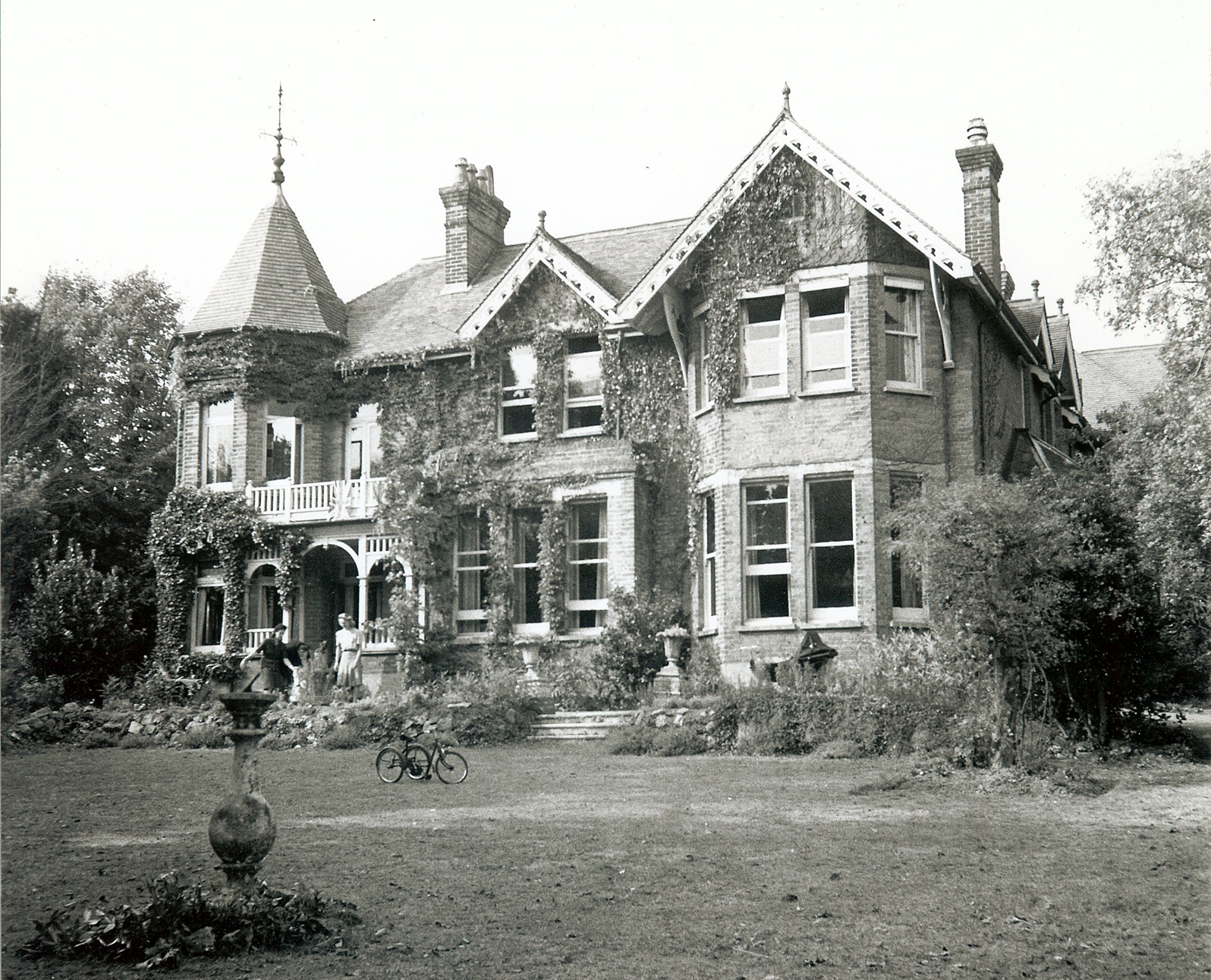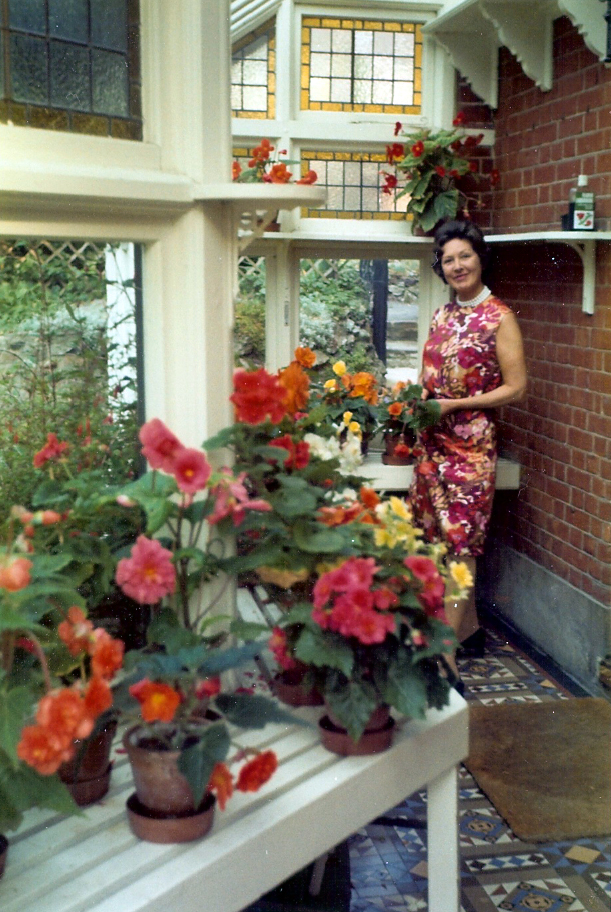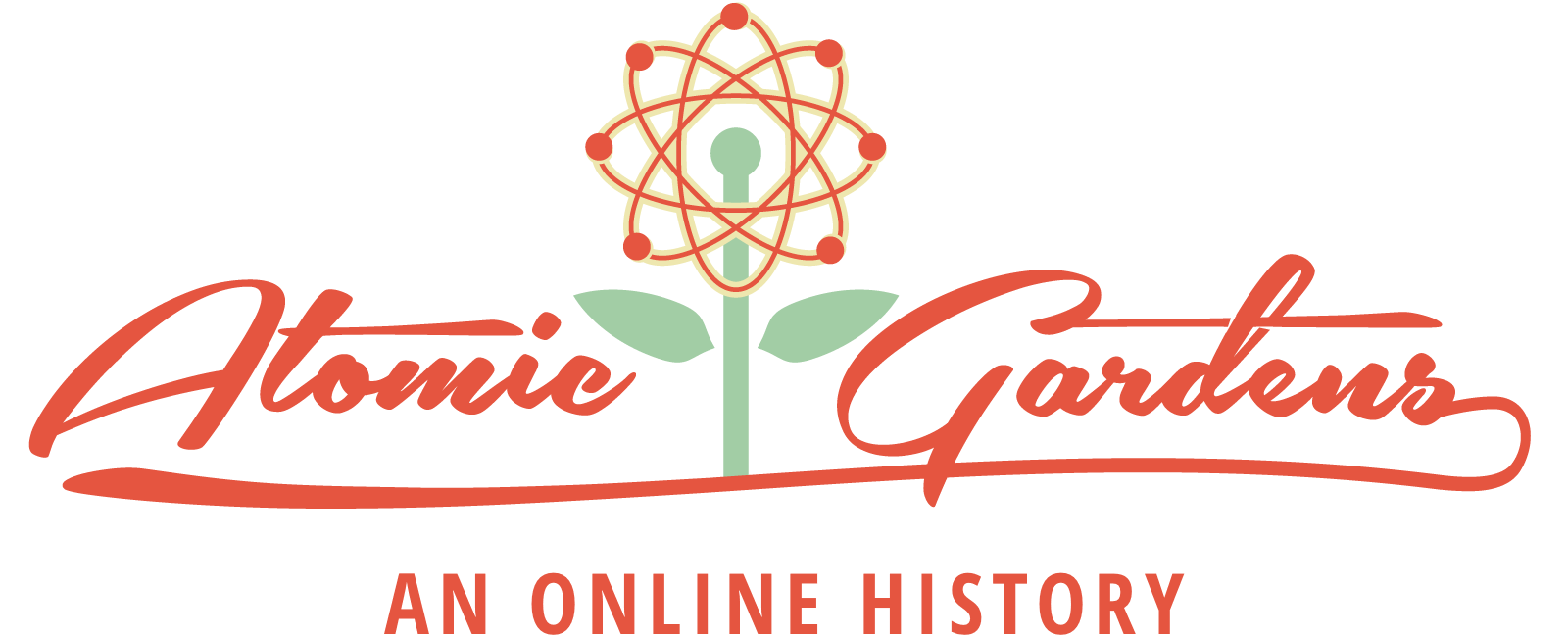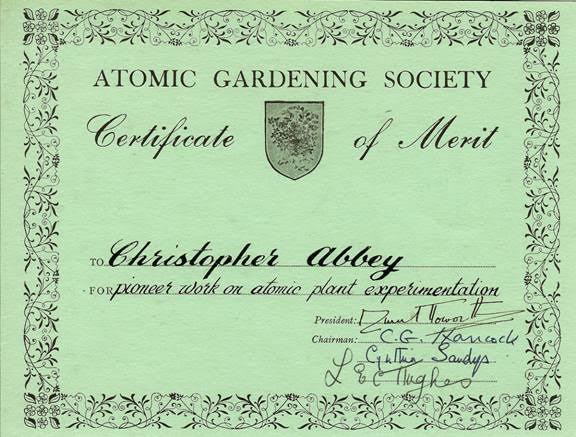Oral Histories of the Atomic Gardens
If you have a memory of the irradiated plants or the atomic gardens, please add it via the contact form to be included here.
“When I was in 8th grade in 1968, I was assigned a science experiment– and found a place in Tennessee that would send irradiated tomato seeds. I thought they came from Oakridge — but after listening to 99% Invisible, I’m not sure. In any case, I carefully planted those seeds (with a control planter of normal seeds) — and they actually grew and produced tomatoes. I remember eating the irradiated ones. They were just tomatoes — but I swear, their shapes weren’t round, but longer, like an elongated kiwi.
After all these years, I’m still proud of that experiment. It may have been the single most important thing that made me interested in science in a lifelong way.
The story would be better if I had become a scientist– but instead, I became an art professor at IU Southeast. 🙂 (I’m also a gardener.)Still, I loved growing those tomatoes, carefully measuring and charting their growth every week. I still love science and consider myself an educator that believes in the delight of discovery — whether it’s drawing an image or growing tomatoes from irradiated seeds. (I also remember being a bit afraid of those plants, not fully understanding that the irradiation caused a mutation in the seeds — and the plant and fruit were fine.)I dunno — there are those things learned in classes when you’re a kid in school– that excite you and are memorable. If you’re lucky, you become a lifelong learner. ” – Debra Clem
“In either the 1959-60 or the 1960-61 school year, I was in one of those post-Sputnick “gifted” classes at the Harbor Road Elementary School in Valley Stream, New York . (Now renamed as the Robert W. Carbonaro School). We were taken on a field trip tour of Brookhaven Labs. All I remember is being impressed by the size of the giant atom splitters. I don’t remember the gardens. We came home with two gifts: one was a little gray cardboard tube, about 4″ long and half-inch in diameter, with a metal screen at one end. You put your eye to the other end to see flashes of light that we were told were “alpha rays.” I don’t know what was in it to do that or how safe it was (at the same school at another time, we were given little blobs of mercury to play with in our hands.) We also received seeds from Brookhaven to plant in our classroom in paper cups. I think they were tomato seeds. I don’t remember mine even sprouting, and if anyone else’s did, it shriveled quickly. The main result of this experience was that as a suburban kid who had no exposure to home gardens, I thought that this was what gardening was all about: this sick idea to plant seeds in order to see if some freak of nature would grow. I’m 68 now and only in the last few years have come to appreciate what a wonderful and healthy part of life gardening is. I have told the strange story of the mutated seeds to friends who are gardeners and received shocked responses. I was so glad to hear the 99% Invisible podcast and get a larger perspective on this experience. Thanks for having this site, I hope my story is helpful.” -Maida Tilchen
“I was the youngest member of the team headed up by Muriel Howorth irradiating and subsequently growing these mutated seeds back in the 1950s.
When I think about the procedures used back then, I’m surprised that I don’t glow in the dark !
As I recall, I was 14 years old at the time, attending Eastbourne College public school.I was a couple of years ahead of most of the others in my age group, so didn’t have much in common with most of the boys in my classes, and with GCE O levels out of the way at 14 and already specialising in physics, chemistry & maths at A level, I had a good grasp of radioactive isotopes, the various products of decay and their effects.Muriel lived in the next street to me in Eastbourne….I think she was a little surprised that I was able to converse with her on the subject. My father was her dentist, and practised from home and this provided the opportunity for our fortuitous meeting.
The large conservatory at our family home was used to grow her famous peanut plant, and many other irradiated species, which I personally tended on a daily basis.
Although the horrors of the atom bomb were well known to us in those days, somehow other sources of radiation weren’t considered in the same light. I can remember my sister and I being taken regularly to the shoe shop by my mother and the two of us spending 15 minutes or so exposed to X-Rays on our feet to see if the shoes were fitting correctly, and these were fairly heavy doses. Indeed whilst mother was paying at the counter we experimented putting arms legs and heads into the device to see what, if anything, lurked inside!Back to the subject, in the early days Muriel would provide me with various seeds to test including tomatoes, marigold, mellon and the famous peanut. The heated conservatory at our home provided an excellent environment to germinate the seeds and once any successful shoots became established as plants, she would take them back to her greenhouse.I hasten to add that it would be generous to say that only 10% or so ever germinated and perhaps just 1% actually grew into successful plants.Muriel was fanatical about filling in the record cards, twice a day if possible with measurements and photos. I have no idea what happened to the record cards though. I don’t have any of the documentary records I’m afraid. I rather lost touch with Muriel when at 17 I went to Canada to study at McGill University where of course Prof Frederick Soddy did his work on transmutation some 60/70 years earlier.
I’m afraid I don’t remember the names of the others involved [in the Atomic Gardening Society]. I used to see Muriel once or twice a week but probably only met others half a dozen times in total. Very few people I met understood the principles of Atomic Gardening, although some were fascinated, but I haven’t yet met anyone who ever heard of the society ! The general public here remain in complete ignorance ! Actually, looking back it was all rather hit and miss.However obviously I do remember growing the peanut plant to a height of about 4″ and I remember sweet smelling marigolds which climbed like sweet peas, also some rather large strangely coloured toxic tomatoes ! I vaguely recall that there was also something about the peanut mutant providing a substantially increased crop yield as it was resistant to wireworms.When I was unable to nurture the plants myself, my mother’s green fingers provided all the necessary encouragement. Now 93, she lives with me in Eastbourne and virtually everything in the garden that she touches still seems to thrive. At the time my parents’ prize geraniums and pelargoniums received much more admiration from onlookers than the, in the main, stunted [atomic] seedlings which I was tending!
I remain the proud possessor of my Atomic Gardening Society certificate of merit for “Pioneer work on atomic plant experimentation” signed by Muriel Howorth, G.G.Hancock, Cynthia Sandys and L.E.C.Hughes.
I also have a signed copy of her Jubilee Edition “Atomic Transmutation: “The greatest Discovery Ever Made” Memoirs of Frederick Soddy.”
- Chris Abbey, UK

Felixholme, where Chris Abbey grew his atomic plants

The conservatory at Felixholme, where Chris Abbey grew his atomic plants.

Christopher Abbey’s copy of “Atomic Transmutation” with Muriel Howorth’s signature






